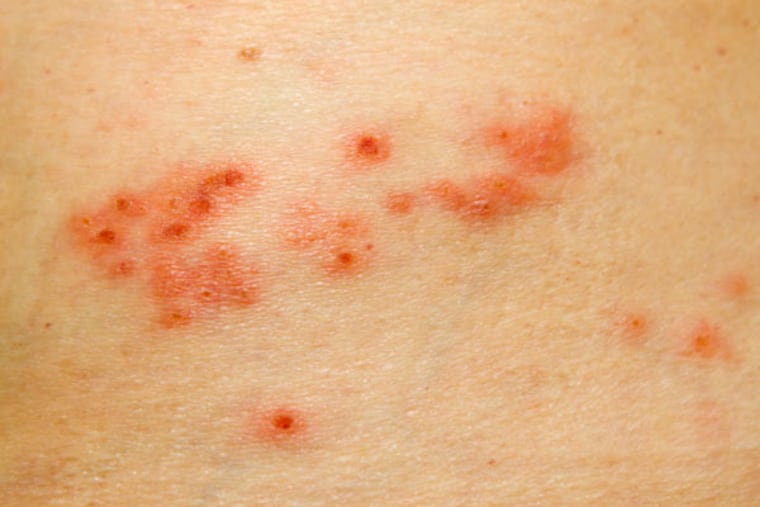Mysterious skin pain with a growing redness
There's an important rule in medicine: don't treat members of your family. It's a good rule, and I'm pretty good about following it. I would never go so far as to prescribe controlled substances for a family member, but it's hard to avoid offering a diagnosis from time to time.

There's an important rule in medicine: don't treat members of your family. It's a good rule, and I'm pretty good about following it. I would never go so far as to prescribe controlled substances for a family member, but it's hard to avoid offering a diagnosis from time to time.
My husband got out of the shower one day and began drying off his back.
"Ouch!" he said.
"What's wrong?" I asked.
"Something hurts."
I looked at the skin of his back. There was nothing there.
"It's nothing," I told him.
"But it hurts. Should I call my doctor?"
My husband has known his doctor longer than he's known me.
"I don't think you need to."
"OK. But it really hurts."
The same thing happened the next day. I looked at his back again. This time, I saw a small red spot just over his right shoulder blade.
"It's probably a bug bite," I said. Somehow it didn't occur to me that it was still late winter, there weren't any insects around, and, even if there were, it was an unusual location for an insect bite.
"It really hurts, though."
"Take a couple of Advil," I said.
It was still hurting him the next day, and now when I looked at it, I saw that the red spot had elongated and was more of a streak moving up toward his shoulder.
"It's probably just contact dermatitis," I told him. "You must have gotten into some poison ivy." Somehow it didn't occur to me that it was the wrong season for poison ivy, and, even so, how would he have gotten it in an area usually covered by clothing, on just one side of his upper back, and nowhere else?
"But it really hurts," he said again.
"Take some more Advil."
By the next day, he was even more uncomfortable. I looked at his back one more time, and saw a small group of blisters developing on the reddened streak of his skin. Now I realized what it was.
"You'd better call your doctor," I said.
Solution
My husband had shingles, a painful rash caused by the chicken pox virus. It's also known as zoster.
After chicken pox infection, the virus goes into hiding in the nerves coming out of the spine. Months, years, or decades later, it emerges and causes symptoms - but only along the course of the nerve. Usually the first symptom is pain, which can be severe. In fact, when the affected nerve runs along the left side of the chest, the pain is so bad it can trick doctors into worrying about a heart attack.
The rash develops a few days after the pain. It has a very characteristic appearance: groups of blisters on a red base, limited to the distribution of one spinal nerve. Whenever we see zoster in more than one nerve at a time, we think of serious problems with the immune system, like HIV infection.
Zoster in certain nerves can be dangerous. If you have an outbreak on your forehead, there's a chance of eye involvement, meaning an emergency ophthalmology visit is in order.
There are antiviral medications we can prescribe, though the rash goes away on its own after about two weeks. The pain almost always subsides as well, but the most feared complication of shingles, known as postherpetic neuralgia, is when the pain continues. It can last for years, tends to be very severe, and is extremely difficult to treat.
This is why the relatively new shingles vaccine is such a good idea for older adults. The vaccine, basically a very high-dose version of the chicken pox shot given to children, is recommended for adults 60 and older, although it is approved starting at age 50.
Often the pain is severe enough to require narcotics, which my husband's doctor gave him. I spoke with the doctor after my husband's visit, and admitted with some embarrassment my double misdiagnosis of a bug bite and poison ivy.
"Don't feel bad," he told me. "I did the same thing with my daughter."